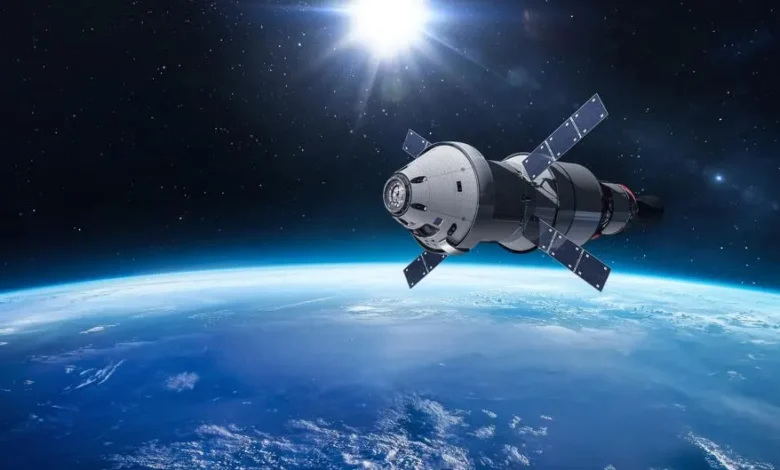Space Exploration in the 21st Century: Beyond the Moon and Mars

The 21st century has ushered in a new era of space exploration, fueled by rapid technological advancements, international collaborations, and private industry innovation. While the Moon and Mars dominate headlines, the scope of space exploration extends far beyond these celestial neighbors. From probing distant planets to unraveling cosmic mysteries, humanity is embarking on bold missions that redefine our understanding of the universe.
The Current State of Space Exploration
Revitalized Lunar Missions
The Moon remains a cornerstone of space exploration. NASA’s Artemis Program aims to establish a sustainable human presence on the lunar surface by the end of the decade, paving the way for future deep space missions. International players like China and Russia are also advancing lunar exploration with plans for robotic landers and bases.
Mars: Humanity’s Next Frontier
Mars has captured the collective imagination as a potential second home. NASA’s Perseverance rover continues its search for signs of ancient life, while missions like ESA’s ExoMars and China’s Tianwen-1 expand our understanding of the Red Planet. Private companies like SpaceX are working toward manned missions, bringing Mars colonization closer to reality.
See also: Biodiversity and Conservation: Why Protecting Nature Matters
Beyond the Moon and Mars: Expanding Horizons
Exploration of the Outer Planets
The outer planets and their moons represent some of the most intriguing destinations in the solar system.
- Jupiter’s Moons: Missions like NASA’s Europa Clipper and ESA’s JUICE (Jupiter Icy Moons Explorer) aim to investigate Europa and Ganymede for signs of subsurface oceans and potential habitability.
- Saturn’s Enceladus and Titan: With its plumes of water vapor, Enceladus is a prime target for astrobiology, while Titan’s methane lakes offer clues about prebiotic chemistry. NASA’s Dragonfly mission is set to explore Titan in the 2030s.
Asteroid Mining and Defense
Asteroids hold the promise of resources like metals and water, essential for in-space manufacturing and colonization. Missions like NASA’s OSIRIS-REx and Japan’s Hayabusa2 have already returned asteroid samples. Meanwhile, planetary defense initiatives, such as NASA’s DART mission, test our ability to deflect potentially hazardous asteroids.
Probing the Sun and Beyond
Solar exploration is crucial for understanding space weather, which impacts Earth’s technology and future crewed missions. The Parker Solar Probe and ESA’s Solar Orbiter are providing unprecedented insights into the Sun’s outer atmosphere. Beyond our solar system, projects like the Voyager spacecraft and Breakthrough Starshot aim to explore interstellar space.
The Role of Technology in Expanding Frontiers
Advanced Propulsion Systems
Innovative propulsion technologies, such as ion drives, solar sails, and future nuclear propulsion, are enabling faster and more efficient space travel. These systems are critical for reaching distant planets and moons.
AI and Robotics
Artificial Intelligence (AI) and robotics are revolutionizing space exploration by automating complex tasks, enhancing data analysis, and improving spacecraft autonomy. Rovers, like Perseverance and China’s Zhurong, showcase these advancements in action.
Space Telescopes
Next-generation space telescopes, such as the James Webb Space Telescope (JWST) and the planned Nancy Grace Roman Space Telescope, are peering deeper into the universe, uncovering new planets, galaxies, and clues about the origins of life.
International and Private Collaborations
Global Partnerships
Space exploration is increasingly collaborative, with agencies like NASA, ESA, Roscosmos, and CNSA working together on missions. The International Space Station (ISS) remains a beacon of global cooperation.
Rise of Private Space Companies
Private companies like SpaceX, Blue Origin, and Rocket Lab are transforming space exploration. Their innovations in reusable rockets, cost-effective launches, and ambitious missions are driving a new space economy.
Ethics and Challenges in Space Exploration
Space Sustainability
The growing volume of satellites and debris in Earth’s orbit poses significant risks to future missions. Initiatives like space debris removal and sustainable satellite deployment are crucial.
Equity in Space Resources
As countries and companies compete for resources like lunar ice and asteroid metals, questions about fair access and ownership arise. Establishing international agreements, such as the Artemis Accords, is vital.
Protecting Extraterrestrial Ecosystems
Ensuring that exploration does not contaminate pristine environments, like Europa or Mars, is a key ethical concern. Strict planetary protection guidelines aim to prevent biological contamination.
Future Visions: Space Beyond 2050
The coming decades will see humanity venture further than ever before, with ambitious goals including:
- Interstellar Exploration: Concepts like the Breakthrough Starshot initiative aim to send probes to Alpha Centauri, our nearest star system.
- Space Colonization: Permanent habitats on Mars, the Moon, and even free-floating space colonies may become a reality.
- Deep Space Mining: Leveraging resources from asteroids and other celestial bodies to support Earth’s economy and space infrastructure.
Conclusion
Space exploration in the 21st century represents the pinnacle of human ingenuity and ambition. While the Moon and Mars remain central to our cosmic aspirations, the journey beyond these destinations is equally vital. By advancing technology, fostering collaboration, and addressing ethical challenges, humanity can unlock the secrets of the universe and secure a future among the stars.





